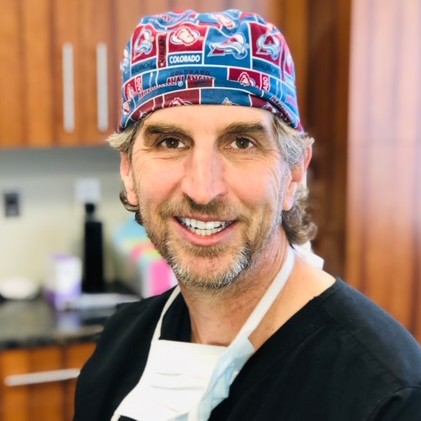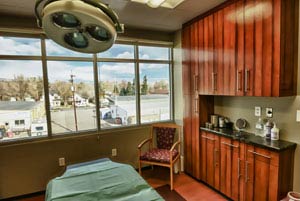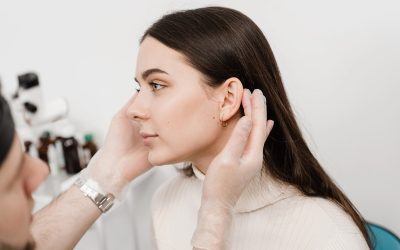Rhinoplasty is more than just a cosmetic procedure, understanding the science behind cartilage stability and healing can empower patients, offering clarity and confidence in navigating their rhinoplasty journey. This article delves into the nuances of cartilage movement, dispelling myths while emphasizing expert care and modern surgical techniques.
Understanding Rhinoplasty and Cartilage Concerns
What Is Rhinoplasty?
Rhinoplasty, often referred to as a “nose job,” is a surgical procedure designed to enhance both the functionality and aesthetics of the nose. While many people associate rhinoplasty with cosmetic improvements, it also addresses structural issues like a deviated septum or nasal obstructions that can impair breathing. Central to the procedure is the reshaping and repositioning of cartilage, the flexible tissue that gives the nose its structure and contour. Surgeons work with remarkable precision, tailoring the cartilage to suit the patient’s unique facial proportions while maintaining its integral role in nasal stability.
Why Cartilage Stability Matters
Cartilage is not just a passive component of the nose; it’s a dynamic element that interacts with surrounding tissues to maintain form and function. Post-surgery, the behavior of cartilage becomes a critical factor in achieving long-lasting results. The intricate balance between the body’s healing process and the surgeon’s skill determines whether cartilage remains securely in place or risks minor shifts. Factors like skin thickness, healing speed, and the body’s response to surgical modifications can all influence cartilage stability. Rarely discussed but equally vital are the micro-adjustments the body makes as it integrates these changes, making the post-operative period essential for ensuring the nose adapts seamlessly to its new structure. By exploring these aspects, patients can better understand why skilled surgical techniques and diligent post-operative care are essential for success.
What Happens to Cartilage During Rhinoplasty?
The Role of Cartilage in Nasal Structure
Cartilage is the architectural backbone of the nose, responsible for its shape, stability, and functionality. It is divided into key sections, including the septal cartilage, which supports the bridge; the alar cartilage, which defines the nostrils; and the upper lateral cartilage, which contributes to the nose’s structure and airflow. During rhinoplasty, these elements are carefully analyzed and modified to align with the patient’s desired outcome. Unlike bone, cartilage is flexible, which allows for precise reshaping, but its adaptability also makes it more susceptible to movement during the healing process, a factor that must be carefully managed.
Modifying and Securing Cartilage During Surgery
When reshaping cartilage, surgeons employ advanced techniques such as trimming, suturing, or grafting to achieve the desired contours. Grafts, often harvested from the patient’s own cartilage, may be used to reinforce weak areas or add volume. Every adjustment must balance aesthetics with structural integrity, as over-removal of cartilage can compromise the nose’s support.
To secure the cartilage in its new position, surgeons rely on methods like fine sutures and specialized graft placement to prevent movement. These techniques not only provide immediate stability but also guide the cartilage as it integrates with the surrounding tissues during healing. This intricate process underscores why a deep understanding of cartilage behavior and cutting-edge surgical methods are vital to ensuring lasting, natural-looking results.
Can Cartilage Move After Rhinoplasty?
Cartilage movement after rhinoplasty is a topic often surrounded by misconceptions. While it’s true that cartilage can shift during the healing process, this is typically rare when the procedure is performed by a skilled surgeon. Post-surgery, cartilage begins to adapt to its new position, a process influenced by several factors, including the surgical techniques used, the body’s natural healing response, and the patient’s adherence to post-operative care guidelines. However, minor adjustments in cartilage position can occur as swelling subsides and tissues settle, which is a normal part of the recovery phase. These slight shifts are generally imperceptible and have little to no impact on the final outcome.
Factors Contributing to Cartilage Stability
The stability of cartilage post-rhinoplasty is largely dependent on the methods used to secure it during surgery. Techniques like precision suturing, the use of cartilage grafts, and the placement of nasal splints play a significant role in minimizing the risk of movement. Equally important is the integrity of the patient’s skin and tissue envelope, which acts as a natural support system for the reshaped cartilage. Another overlooked aspect is the patient’s activity level during recovery. Actions like heavy lifting, sleeping on the side, or experiencing trauma to the nose can inadvertently cause cartilage to shift. Understanding these nuances allows patients to be proactive in ensuring their results are preserved, highlighting the importance of a holistic approach to rhinoplasty care.
Signs of Cartilage Movement and When to Seek Advice
Cartilage movement after rhinoplasty is uncommon, but being aware of the signs can help patients address potential issues early. While minor shifts are a natural part of the healing process, more significant movement can occasionally occur and may impact the nose’s appearance or function. Recognizing these signs and knowing when to seek professional guidance is essential for ensuring the best possible outcome.
Here are some indicators that may suggest cartilage movement:
- Noticeable asymmetry in the nose’s shape: If the nose appears uneven or deviates significantly from the intended result, it could indicate cartilage displacement.
- Breathing difficulties: Any new or worsening nasal obstruction post-surgery may signal that internal structures, including cartilage, have shifted.
- Visible irregularities: Bumps, indentations, or other unexpected contours that develop after the initial healing phase can be signs of cartilage instability.
- Persistent swelling in a localized area: While general swelling is normal, prolonged or concentrated swelling could point to an underlying issue.
- Pain or discomfort beyond the expected recovery timeline: Lingering or escalating pain may indicate complications related to cartilage movement.
If any of these signs occur, it’s crucial to consult your surgeon promptly. Early intervention often allows for simple corrective measures, ensuring that the desired aesthetic and functional outcomes are preserved.
Preventing Cartilage Movement After Rhinoplasty
Preventing cartilage movement after rhinoplasty requires a combination of skilled surgical techniques and diligent post-operative care. While your surgeon plays a critical role in stabilizing the cartilage during the procedure, patients must also take specific steps during recovery to maintain the desired results. By following these practices, the likelihood of complications or cartilage shifts can be minimized.
Here are some essential tips to help prevent cartilage movement:
- Follow all post-operative instructions carefully: Your surgeon’s guidelines are designed to optimize healing and protect the surgical site. This includes advice on cleaning, medications, and activity restrictions.
- Avoid any physical trauma to the nose: Activities that risk accidental impacts, such as contact sports or crowded environments, should be avoided until cleared by your surgeon.
- Sleep in an elevated position: Sleeping with your head elevated helps reduce swelling and pressure on the nose, which can aid in stabilizing cartilage.
- Refrain from heavy lifting or intense physical activities: Strenuous movements can increase blood pressure, potentially disrupting the healing process and causing subtle cartilage shifts.
- Wear protective gear if needed: For patients in environments with a higher risk of nasal trauma, temporary protection like splints or guards may be recommended.
- Attend all follow-up appointments: Regular check-ins with your surgeon ensure that healing is progressing as expected and allow for early detection of any issues.
Taking a proactive role in your recovery is crucial for achieving the best possible outcome and maintaining long-term cartilage stability.
Conclusion
Cartilage stability is a key factor in achieving successful rhinoplasty results, and with the right care, movement after surgery is rare and manageable. By understanding the role of cartilage, recognizing potential signs of displacement, and following post-operative care guidelines, you can feel confident in your recovery and the long-term outcome of your procedure. At Boulder Valley Plastic Surgery, Dr. Jeffrey Swail and his team are committed to providing expert care in a state-of-the-art facility. If you’re considering rhinoplasty or have questions about your recovery, visit us or call (303) 449-6666 to schedule your appointment today!





